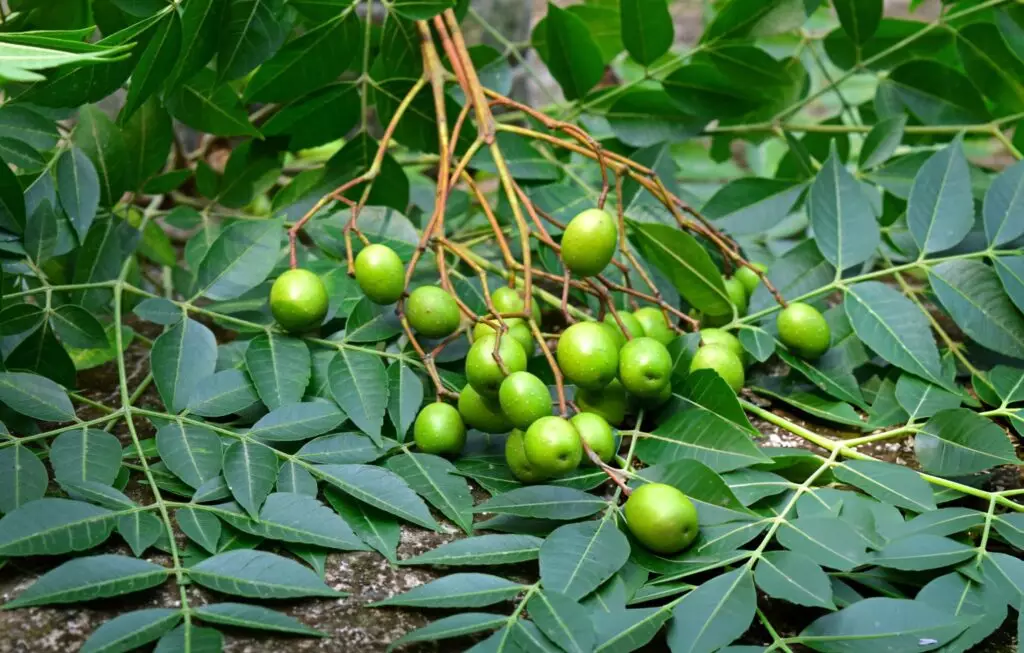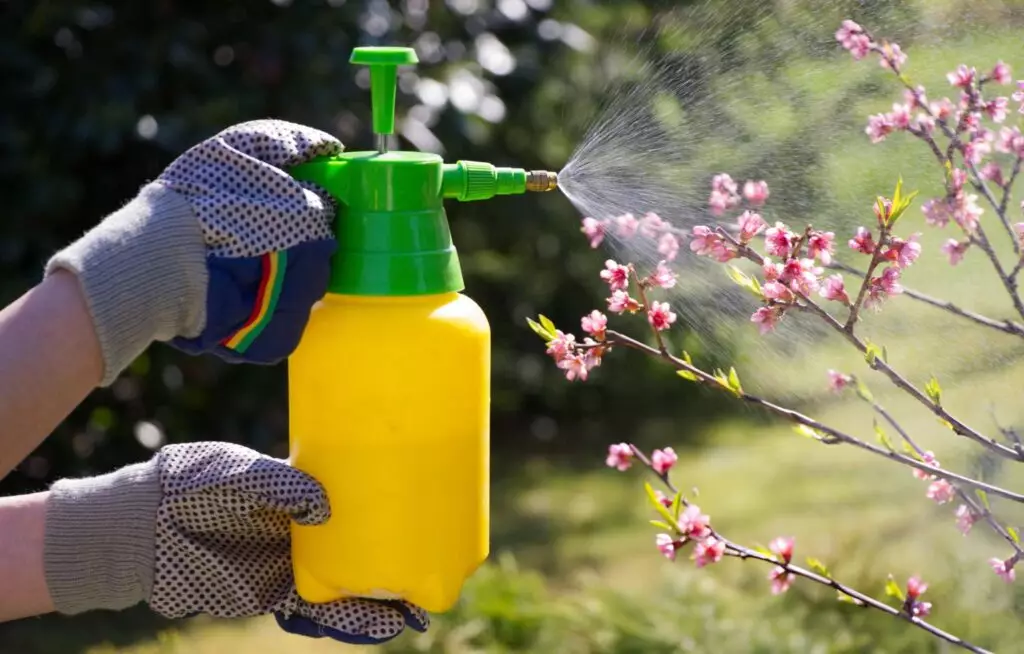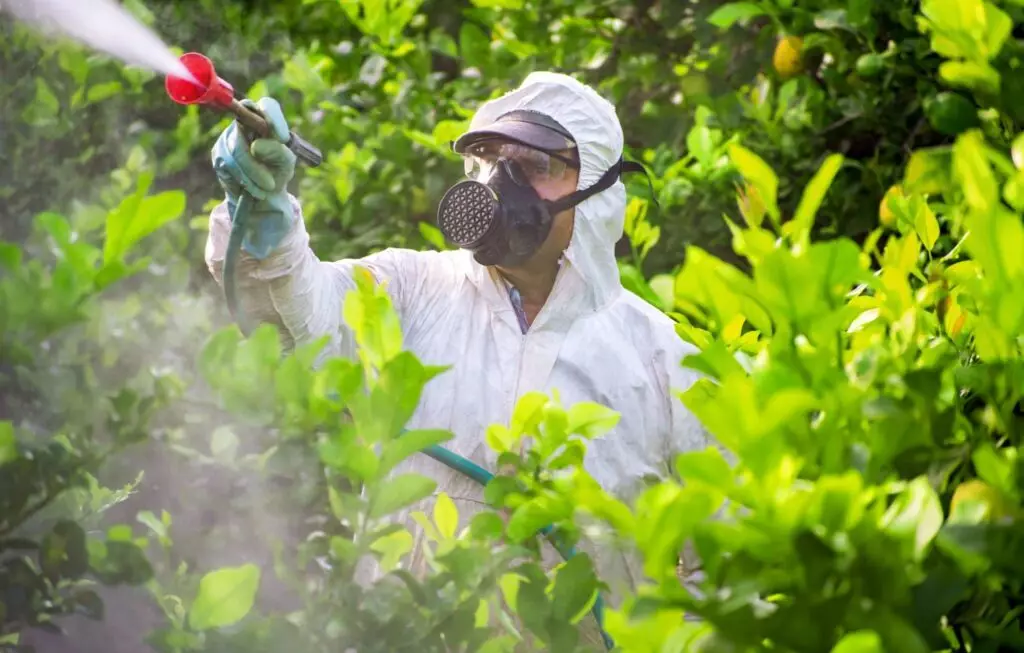Introduction to Azadirachtin: Nature’s Natural Insecticide
First time I heard of it, I said something like “Azadirrr– what the heck?”, and that’s the response most people have when they first hear of the near magical neem extract, called Azadiractin. Way back then, I had a spiraling problem with some aphids that was quickly getting out of control, and I needed help — the deadly organic kind of help.
What I got, was a small concentrated amount to test, maybe a pint or maybe 4 oz, and I diluted it just before spraying. It was an excellent knock down on the population. I applied it regularly, and it simply kept them from ever establishing a massive colony. My plants were safe – dare I say a bit healthier and shinier – and my finances and my crop were saved.
What is Azadiractin?
Common question. Basically, azadirachtin is a powerful broad-spectrum pest control solution extracted from the seeds of Azadirachta indica tree, native to India. It’s species of tree with legendary status. Azadirachin is the active ingredient found in tiny amounts in neem oil, is highly effective in combating a wide variety of pests, while still being safe for beneficial insects. Don’t confuse Azadirachtin and Neem oil, or other cheap neem products, there is a huge difference. It’s like saying diesel is the same as crude oil. Like whiskey is the same as beer. They are related, but very different.
An azadiractin insecticide is one of the most popular alternatives to synthetic chemical insecticides because it literally checks all the boxes.
Neem oil itself is a yellowish-brown liquid with a nutty odor and bitter taste that is usually diluted in water with an emulsifier, and that solution is sprayed directly to plants or mixed with other solutions for pest control. But the thing most people find out the hard way, neem oil isn’t very effective. Especially not for big pest problems.

Zooming out to the entire category that Azadirachtin falls under, Insect growth regulators (IGRs) are a class of chemical compounds that are designed to disrupt the life cycle of insects at various stages of development, from egg to adult.
Origin and Extraction: The Neem Tree’s Role in Producing Azadirachtin
The neem tree, native to India, is highly valued and it has been used for centuries for its many benefits. Among its many uses, the neem leaves and seeds are used as a natural insecticide, fungicide, antibacterial, antiviral agent, skin treatments, birth control, and a lot more.
Neem oil is extracted from the seeds of the neem tree through a process called cold pressing. Oil from seeds are commonly extracted through refining, heating, crushing, and cleaning. Oils that are extracted through cold-pressing, are processed at temperatures below 120°F (49°C), and it’s believed that the oil itself retains more of it’s natural compounds through this process.

The neem seed kernel contains azadiractin, the active ingredient responsible for the insecticidal properties of neem oil. The concentration of azadirachtin in neem oil can vary depending on the quality of the seeds and method for extraction, but it typically contains a negligible amount of azadiractin. Neem oil is further refined to concentrate the azadiractin and stabilize it for transportation and storage.
The Science Behind Nature’s Most Effective Biopesticide: Azadirachtin
A quick search will uncover decades of research on neem oil and the active ingredient, azadirachtin.
One key aspect of azadirachtin’s effectiveness as a biopesticide is its function as an insect growth regulator (IGR). IGRs are substances that interrupt the normal development of insects by disrupting hormonal balance, which leads to their inability to molt or reproduce. As a result, the insect population is effectively controlled without resorting to harmful chemical pesticides.
Mechanisms of Action: How Azadirachtin Disrupts Pest Life Cycles
Azadiractin is very similar to insect hormones called “ecdysones”, which is a steroid hormone that stimulates molting events in insects, and molting represents the transition between stages of insect metamorphosis. Ecdysones effectively control the entire metamorphosis process from larvae to adult. Azadiractin blocks the insects production and release of those vital hormones responsible for the physiological changes of metamorphosis to occur. As a result the affected insects cannot molt, and without molting properly azadirachtin breaks their life cycle.

While an azadirachtin spray pesticide is most effective on juvenile insects and prevents them from reproducing as described above, it is also ovicidal and anti-feedant. In other words it kills the pest’s eggs and interrupts their feeding. That’s what makes it one of the most powerful organic botanical insecticides available today.
Azadirachtin, a hydrophobic extract of neem oil, is known for its broad-spectrum effectiveness against a wide range of plant destroying insect species. It controls pests like whiteflies, aphids, leafhoppers, mealybugs, and even spider mites. One of the most amazing facts about azadirachtin is its low toxicity towards mammals and beneficial insects, like honey bees and butterflies, because it isn’t applied to where they feed and it’s not applied to them before they are adults.
Azdirachtin: An Extraordinary Organic Insect Growth Regulator
Insect growth regulators (IGRs) are a class of pesticides that disrupts specific hormones in insects, as opposed to conventional pesticides that typically attack the pests’ nervous system causing an immediate death. IGRs effectively control the pests’ growth and development through all stages of metamorphosis, especially molting. By targeting the pests’ hormonal systems, IGRs prevent them from reaching the adult stage in good health, so they cannot reproduce. And populations without adults will decline over time.
Commercial Products and Applications of Azadirachtin in Agriculture and Home Gardening
Pest control has always been a significant concern for gardeners and farmers, as it affects the health and productivity of plants. Azadirachtin, derived from neem tree seeds, is an eco-friendly and effective solution for insect control. It offers several advantages over synthetic pesticides due to its natural products, making it a popular choice for environmentally conscious individuals.

Azadirachtin is also effective against a wide range of pests like leafhoppers and spider mites. Leafhoppers are small insects that suck the sap from leaves, causing damage to plants. Spider mites are tiny pests that create web-like structures on plants and feed on their foliage. With its broad-spectrum activity, Azadirachtin reduces the need for multiple pesticides, saving time and resources for gardeners and farmers.
Safety Profile and Environmental Impact of Azadirachtin-Based Pest Control
Beneficial insects are an essential part of the natural and agricultural ecosystems. Honey bees pollinate many of our crops to produce fruit and other beneficial insects like dragonflies and wasps are predatory, and they actually eat many insect pests.
Azadirachtin and neem oil are more environmentally friendly and sustainable than many synthetic pesticides, by avoiding harm to these helpful creatures.

The application of Azadirachtin in organic farming has proven to be incredibly beneficial due to its non-toxic nature and low environmental impact. Its targeted action ensures that it does not harm beneficial insects such as bees and butterflies, which are crucial for pollination and overall ecosystem health. Furthermore, it biodegrades rapidly in sunlight and soil, minimizing its effects on non-target organisms and preventing the buildup of harmful residues. The half-life of azadirachtin on the leaf surface is roughly only 2 days.
Effectiveness of Azadirachtin: Target Pests and Uses in Integrated Pest Management
As you’re learning azadirachtin is celebrated for its non-toxic and eco-friendly attributes, making it a popular choice in organic farming. The efficacy of Azadirachtin can be attributed to its active compounds, which interfere with the life cycle of a wide range of pests, from insects to mites and nematodes.

According to “International Journal of Agricultural Policy and Research”, on the efficacy of Azadirachtin, the primary benefits from treating plants with azadirachtin based products were caused by the toxicity to the pests, the inhibition of adult reproduction, and the prevention of pests in the nymph stage to molt.
Comparisons with Synthetic Pesticides: Advantages and Disadvantages of Azadirachtin
The use of azadirachtin in sustainable pest management practices has several benefits. First and foremost, it reduces the reliance on synthetic pesticides, and many insect pest populations have developed resistance to synthetic pesticides over time. Furthermore, the low toxicity of azadirachtin means that it poses minimal risk to humans and other non-target organisms. Lastly, since the neem tree can be easily grown in various parts of the world, utilizing its seeds for pest management purposes promotes local and sustainable agriculture.

Using natural products like Azadirachtin contributes to a reduced risk of pesticide resistance in target pest populations. Synthetic pesticides often lead to the development of resistant pests over time due to their uniform mode of action. However, natural products like Azadirachtin have multiple modes of action, making it harder for pests to develop resistance.
Azadirachtin’s unique characteristics earned it a place amongst IGRs, which are considered a safer alternative to conventional synthetic insecticides. Most synthetic pesticides will kill beneficial insects along with the target pest, and they are not suitable for organic farming.
Unlike synthetic pesticides, which are often derived from petroleum, Azadiractin is extracted from a plant that can be sustainably farmed in many places around the world.
References
- National Academies of Sciences, Engineering, and Medicine. 1992. Neem: A Tree for Solving Global Problems. Washington, DC: The National Academies Press.
- Azadirachtin on Wikipedia
- American Chemical Society: Azadirachtin
- Azadirachtin — A naturally occurring insect growth regulator, published in Indian Academy of Sciences, 1990
- Neem Oil Fact Sheet

In this blog, discover what Azadirachtin is and how it serves as a powerful natural pest control solution. Learn about its benefits, sources, and its effectiveness against common pests.